+91-8929175340
This package includes the destinations Kathmandu,Bhaktapur,Dhulikhel andNamobuddha.Services not mentioned in the itinerary.
All intrance fees at sightseeing places.
Airport tax,tips and gratitudes.
Personal expenses,lunch,dinner,beerages.
Portage at the airport.
Travel incurance.29-0631-12
Day 1 : Airport arrival
Arrival at Kathmandu International Airport.Meet assist and transfer to the hotel by our office representative in an exclusive vehicle.Take rest for the remaining day and overnight stay at the hotel in Kathmandu.
Day 2 : Kathmandu sightseeing
After breakfast around 7:30 we start our full day sightseeing of Kathmandu valley which are briefly stated belows.
1.Pashupatinath:
The magnificent temple of Lord Pashupatinath about 5 kms north-east of Kathmandu, is situated amidst many other temples on the right bank of the river Bagmati. Pashupathinath is the guardian spirit and the holiest of all Shiva shrines in Nepal.Lord Shiva is known by many different names; and Pashupati is one. Pashu means leaving beings, and Pati means master. In other words Pashupati is the master of all living beings of the universe. This is how lord Pashupati is eulogized in the Vedas, Upnisada and ohter religious books.The oldest ever chronicle in Nepal, Pashupati area is regarded as one of the most important places of pilgrimages for the followeres of Hinduism.
2.Boudhanath Stupa:
Boudhanath Stupa (or Bodnath Stupa) is the largest stupa in Nepal and the holiest Tibetan Buddhist temple outside Tibet. It is the center of Tibetan culture in Kathmandu and rich in Buddhist symbolism. The stupa is located in the town of Boudha, on the eastern outskirts of Kathmandu. Bodnath was probably built in the 14th century after the Mughal invasions; The five Buddhas also personify the five elements (earth, water, fire, air and ether), which are represented in the stupa's architecture. The base of the stupa consists of three large platforms, decreasing in size. These platforms symbolize Earth, and here you can look out at the mountains while listening to the chants of the devout doing kora, walking around the stupa praying.
3.Syambhunath Stupa:
After lunch we head atop a hill on the western edge of the Kathmandu Valley, the ancient Swayambunath Stupa (known to tourists as the Monkey Temple) is Kathmandu's most important Buddhist shrine. The sleepy, all-seeing Buddha eyes that stare out from the top have become the quintessential symbol of Nepal. hen this temple was founded about 2,000 years ago, Kathmandu Valley was filled with a great lake. According to Buddhist legend, a single perfect lotus grew in the center of the lake. When the bodhisattva Manjusri drained the lake with a slash of his sword, the lotus flower settled on top of the hill and magically transformed into the stupa. Thus it is known as the Self-Created (swayambhu) Stupa. The earliest written record of the Swayambunath Stupa's existence is a 5th-century stone inscription, but scholars believe there was probably a shrine here as early as the 1st century. Even before that, it is likely that animist rites took place on this hill. Swayambunath is one of Nepal's oldest Buddhist temples and it has an ancient atmosphere, especially when one approaches on foot with the pilgrims. The primary approach to the temple is from the eastern side, where 365 ancient steps lead up the steep forested hillside. The base is about a 20-minute walk from the center of Kathmandu. This staircase is the only route pilgrims would consider and is the most memorable way for any visitor to experience the stupa. However, an alternative is to drive or take a taxi to the west side, where there are only a few steps to climb to the top.
4.Budhanilakantha Temple:
Budhanilkantha Temple is located at the base of Shivapuri Hill within the Kathmandu valley on the northern side. It is also known as mystical Budhanilkantha temple or Narayanthan temple .Budhanilkantha literally means “Old Blue Throat”. It is only nine kilometer away from the main city. It is a deity of Lord Vishnu; Lord Vishnu is also known as Narayan.It is called Vishnu (Narayan) Jalasayan lying on Ananta Sesa, in the cosmic ocean. The deity is about thousand years old. Lord Vishnu is about five meter (Seventeen fits) long and lying in a thirteen meter (forty three fits) long tank, as if floating with his legs crossed with his sleeping body resting on the coils of Ananta and his 11 hooded head.His four hands hold the four symbols of Vishnu, the Shankha as conch shell, Chakra as disc,Gadha as club and Padma as lotus flower. It is believe that the deity was carved in the seventh or eighth century during the Licchavi period. Hindus can walk down the steps and touch his feet. It is with the sacredness of this particular god that a deep seated belief was created by King Pratap Malla through a prophetic dream. It was his strong belief and fear that should the King of Nepal visit the Budhanilkantha temple, death would be threatening immediately to fall upon his departure. The two other images of the deity which were carved during the same time lie at two particular destinationa, the Balaju Garden were public viewing can take place and the beautiful Royal Palace in Kathmandu.It is here at Budhanilkantha temple, however that public is not permitted.
Overnight stay at a hotel in Kathmandu.
Day 3 : Bhaktapur sightseeing
After breakfast around 7:30 we start our full day sightseeing of Bhaktapur which is briefly stated belows.
Bhaktapur:
Were there nothing else in Nepal save the Bhaktapur Durbar Square, it would still be aptly worth making a journey half way round the globe to see. E.A. Powell, The Last Home of Mystery, 1929, London
Bhaktapur, between the 14th and the 16th centuries, was the capital of Nepal. Though today it has lost the privilege to Kathmandu, it still retains its culture and traditions, some say, even better than Kathmandu or Patan. One reason is that it is 15kms away from the madding crowd, the choking traffic and the general mayhem of the capital city. During the ancient days, the city was an important business centre as it was located in the bustling trade route to Tibet. The inhabitants were prosperous and self reliant. They were blessed with a fertile soil and the farmers could make enough produce to feed the entire town. The craftsmen were a respected lot and they were entrusted with the task of making the temples really fit for the gods. And by the looks of it, they did extraordinary justice to their responsibilities.
A living heritage’Bhaktapur’ meaning ‘city of devotees’ proudly bears the title of the ‘cultural capital of Nepal’ and lives up to it. Listed as a World Heritage by UNESCO for its exquisite temples, exotic wood carvings and other rococo works in stone and metal, Bhaktapur is in a class of its own. Compared to the other durbar squares, the Bhaktapur Durbar Square is quite spacious. Ironically, this is because of an earthquake that happened in 1934 which destroyed many of the temples and monuments that stood here once. This is a living heritage in every sense. There is even a school inside the premise, the entrance to which is the famous lion gate. Right next to the lions that stand as a possible deterrent for students bunking classes, is the statue of Ugrachandi, one of the masterpieces in stone. Ugrachandi is the fearful manifestation of the consort of Lord Shiva. Bhairab, the fierce avatar of Lord Shiva, associated with annihilation, is revered all over Nepal by both Hindus as well as Buddhists. Bhairab is invoked to destroy and annihilate enemies. The images of Bhairab which you find in the durbar square hence are quite ferocious and intimidating.
The Dattatreya Square named after the triad deities, Brahma the creator, Vishnu the preserver and Maheshwara the emancipator are a delight for those interested in wood carvings. The Square also features some of the finest examples of metal craftsmanship you would ever see. The 55 Windows Palace, built in the 18th century, is made of brick and has an upper floor entirely of wooden windows. Hence, the name. The earthquake of 1934 partially destroyed the palace. Fortunately some of the more exotic carvings were mercifully spared from the fury. The Taleju Bhawani was the preferred deity for the kings here as well. Getting inside the Taleju temple complex is not usually encouraged but you can persuade the armed guards to look the other way. Once inside the complex, you get a foretaste of some imperial preferences. The Mallas, it seems, were as fond of luxuries as they were of their gods. Their swimming pool had an open terrace for sunbathing. The golden spout was for filling the pool with water and the entire pool was outlined like a sprawled snake. Even inside the pool, the kings had set up miniature temples – well, it definitely looked like they had long-lasting bathing sessions.
At the southeastern corner of the royal palace is the Siddhi Lakshmi Temple. This is known as the ‘Lohan Dega’ or the stone temple. The steps leading up to the temple is flanked by the male and female species of animals and two nobles at the bottom, each of them are shown dragging a naked child and a dog. Just five minutes from the Durbar Square is the Taumadhi Square where the legendary Nyatapola temple stands towering elegantly. ‘Nyata’ is Nepali means ‘five stepped’. The Nyatapola, rising to a regal 30 metres, is Nepal’s tallest temple. Balanced on five receding square plinths, there are five balconies over which are five roofs each supported by magnificently carved wooden columns. At the bottom of the steep stairway that leads up to the temple are two wrestlers from the Malla times who were famed for their skill and strength. Further upwards are lions and griffins and statues of goddesses Singhini and Baghini.
The temple was built by King Bhupatindra Malla for his favourite deity the Siddhi Lakshmi. There are 108 wooden beams that support the roof from below, each depicting the goddess in her different forms. However, one strange fact is that despite the size and the allure of the temple, no one has really seen the goddess. The temple offers great views of the durbar square as well as the surrounding areas. The brick red of the square offers a fabulous contrast against the verdant green of the mountain of the valley. Set at right angles to the Nyatapola is the Bhairavnath Mandir. The three-tiered roof which stands against a clear afternoon sun shows off a massive grandeur. The temple, dedicated to the city’s patron god Bhairav is believed to have extraordinary powers which make it a favourite among the locals.
Drive back to Kathmandu and overnight stay at a hotel.
Day 4 : Kathmandu-Dhulikhel and Namobuddha sightseeing
Proceed to Dhulikhel and then to Namobuddha.Full day city tour,mountain tour and enormous mountain view.The sightseeing places are briefed as belows:
Dhulikhel is the administrative centre of Kavrepalanchok District, Nepal. At the time of the 2011 Nepal census it had a population of 14,283 people in 3,279 households. Dhulikhel lies along the B.P. Highway and Arniko Highway. Arniko Highway connects Kathmandu, Nepal's capital city with Tibet's border town of Kodari. Dhulikhel is located at the Eastern rim of Kathmandu Valley, south of the Himalayas at 1550m above sea level and is situated 30 km southeast ofKathmandu and 74 km southwest of Kodari. The people in the village are Newars, Brahmin, Chhettri, Tamang andDalit. Drinking water in Dhulikhel is some of the best water in Nepal. It was made with the Help of the German NGO,German Technical Cooperation.
Dhulikhel has for many centuries been an important trading centre on the ancient commercial route linking Nepal toTibet. Since time immemorial, people of Nepal travel to Tibet to bring home salt and gold. Likewise, the Tibetans every year with their flocks of sheep enter into Nepal during Dashain, the greatest Hindu festival. They use to purchase chilies and other daily necessities in Nepal and return to their homeland. In those days, a whole day walk fromKathmandu to Dhulikhel was comfortable for Tibet trippers with easily available of food and water at Dhulikhel at the evening for overnight stay. Even now, a bird's eye view from the resorts at Dhulikhel to the landscapes; highway toTibet and horizons far to the Tibetan borders, clearly exhibits Dhulikhel as the gateway of Tibet. After adjoining withTibet by motorable road in 1965, Dhulikhel got a face lift and developed as a tourist destination both for Tibet trippers and tourists. Dhulikhel is an ideal station to stop for overnight stay while going to Tibet and coming back toKathmandu.
The Mountains - A Tourist Paradise: The spectacular snowfed mountains seen from Dhuklikhel must be one of the finest panoramic views in the world. When a blue haze covers the lower portion of the mountains, they seem to be floating in the air. With the snowy mountains on the backdrop, Dhulikhel is a stage of immense beauty and a paradise for nature lovers. Green inviting hills of which still virgin and some turned into beautifully carved agricultural terraces cater to the beholders' pleasure.
Geographically, the plains rise up gradually up to the green mountains and further into the snow capped Himalayas. The panorama offers a majestic undisturbed view of the Himalayan ranges stretching from Mount Annapurna in te far west to Mount Karolung in the Far East. More than twenty Himalayan peaks including Mt. Annapurna (8091 m), Mt. Ganesh Himal (7429 m), Mt. Langtang (7234 m), Mt. Phuribichyachu (6637 m), Mt. Gaurishanker (7134 m), Mt. Lhotse (8516 m) and many others can be seen in their full glory from the different vantage points in Dhulikhel. In short, it is the foremost point for the mountain-oriented sightseeing since time immemorial. The eco-himalayan atmosphere will surprise anyone an unforgettable experience in lifetime.
The Old Town: The oldest area of the town, the southern end, is an assembly of fine old Newari houses, often occupied by 20 or more members of the local extended families. They may not all have glazed windows, hot water or modern furniture, but they have dignity and a friendly atmosphere. Their most valuable assets are the beautifully carved windows and doors, fine examples of traditional Newari craftsmanship.
As one wanders down the traffic free narrow streets, one passes through a medieval city inhabited for at least five centuries and may have a feeling that he is in the garden of cultural theme park. The plan of the city is based on ancient Hindu planning doctrine with the position, shape, scale & dominance between buildings, temples, public squares all having their own meaning and harmony. There are organically developed compact settlements around Dhulikhel. These settlements in one hand conserved heat in the cold valley, and at the same time maximized land for agricultural use. One of such old settlements is Shrikhandapur, which lies 2 km west of the core city near the Kathmandu University, and is also a centuries old Newari and Magar settlement. The settlement is protected by Swet Bhairav (an incarnation of Lord Shiva) and Narayan (Vishnu) deties. The Magar are settlement after the King Prithivi Narayan Shah has reunited the Bigest Nepal and the Magar established the God Gorkhanath[clarification needed].
Temples: There are numerous temples in the town depicting an example of traditional and old Newari craftsmanship of Dhulikhel. These are important places of worship for local people. The core area of Dhulikhel has interesting narrow cobbled streets and lanes embedded with number of Hindu Shrines and a few Buddhist Stupa.
In the centre of the old town is the Narayan Temple with its yellow metal roofs. It is dedicated to Lord Krishna whose birthday is joyfully celebrated here in August. Alongside is the Harisiddhi Temple whose God responds to the worshippers' problems and sees their right and wrongdoings. Both the temples are adorned with profuese wood carvings and fronted by two Garudas in quite different attitude. Bhagwati Temple situated at the top of the western part of the town is considered as one of the best place to see around Dhulikhel and also to enjoy the best mountain views. The GaukhureshworMahadev Temple is about 20 minutes walk to the east of the town near Tundikhel Recreation Park and is located in a peaceful and quite environment. Further up hill, one reaches, within half an hour trek, the Bhagwati (Kali) Temple. This is a beautiful pagoda that one can see on the skyline as one drives into Dhulikhel.
Namobuddha:Located 40 kilometers southeast of Kathmandu, Namo Buddha is one of the most important Buddhist pilgrimage sites south of the Himalayas, as well as being one of the holiest Buddhist sites in the world. Known by Tibetans as Takmo Lu Jin, meaning “Tigress Body Generosity”, the Namo Buddha stupa marks the site where a young prince (in some versions, the Buddha himself) encountered a tigress close to starvation and unable to feed her own cubs. Overcome with compassion, the prince allowed the tigress to consume him and thereby feed her cubs. A small shrine a few minutes walk uphill from the stupa contains statues of the prince together with the tigress and her cubs. On the other side of the hill stands the Thrangu Tashi Yangtse monastery constructed in 1976. Large numbers of pilgrims visit Namo Buddha, especially during the months of February and March.
Head back to Kathmandu and overnight stay at a hotel.
Day 5 : Departure
End of our services with departure transfer to the airport to board flight for your onward destination.
| No of pax | Age Limit | Price per pax (Rs) |
|---|---|---|
| Adult | Above 12 years | $ 327 / Adult |
* Mentioned prices may vary depending upon date of travel, hotel availability, surge pricing and seasonal rush.
Three star combination
| 2-3 pax | $327.00 |
| 4-10 pax | $280.00 |
| 11-19 pax | $232.00 |
| 20+ | $208.00 |
Four star combination
| 2-3 pax | $355.00 |
| 4-10 pax | $309.00 |
| 11-19 pax | $260.00 |
| 20+ | $237.00 |
Five star combination
| 2-3 pax | $512.00 |
| 4-10 pax | $466.00 |
| 11-19 pax | $417.00 |
| 20+ | $394.00 |
Payment Terms & Methods :
* Some Advance Percentage of total booking amount * Airfare/Transport fare to be paid full at one time in advance.
Cancellation & Refund Policy :
* Upon cancellation, refund will be made after deducting the Retention Amount. * Retention Amount varies as per the number of days left before your package start date.
Infinity Tours P. Ltd View Profile
0 / 5
About Infinity Tours P. Ltd
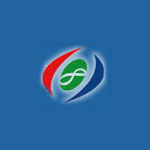
Infinity Tours P. Ltd
0 /5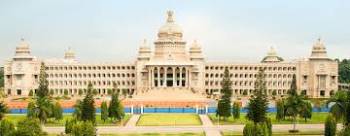 5D/4N
5D/4N
Coimbatore - Ooty - Mysore - Bangalore
08047020431
Get Quote 5D/4N
5D/4N
Old Goa - North Goa - Panjim - Candolim - Calangute - Anjuna - Panaji
 5D/4N
5D/4N
Yamunotri - Gangotri - Kedarnath - Badrinath
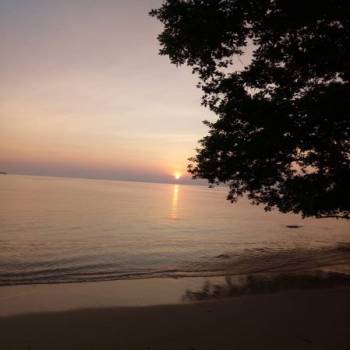 5D/4N
5D/4N
Hyderabad - Mumbai - New Delhi - Chennai - Mahabaleshwar
08048402222
Get Quote 14D/13N
14D/13N
Kathmandu - Lukla - Solukhumbu - Namche
 8D/7N
8D/7N
Kathmandu - Bhaktapur - Patan - Pokhara - Chandragiri Hill - Sarangkot - Pumdikot
 18D/17N
18D/17N
Mumbai - Kathmandu - New Delhi - Jaipur - Fatehpur Sikri - Agra - Jhansi - Varanasi..
08048772512
Get Quote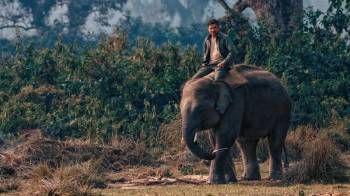 11D/10N
11D/10N
Kathmandu - Nagarkot - Lumbini - Pokhara - Chitwan
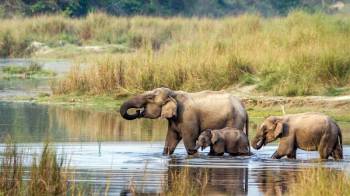 7D/6N
7D/6N
Kathmandu - Pokhara - Chitwan - Nagarkot - Bhaktapur
08048407069
Get Quote